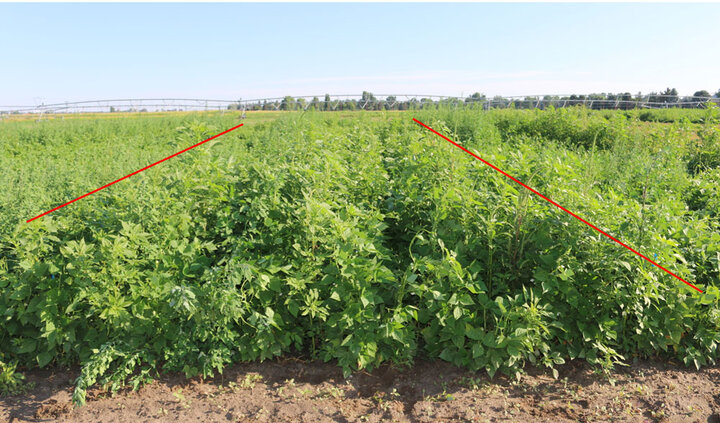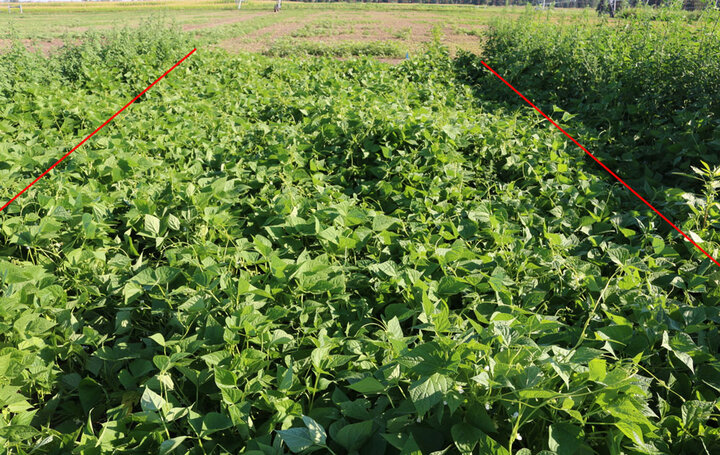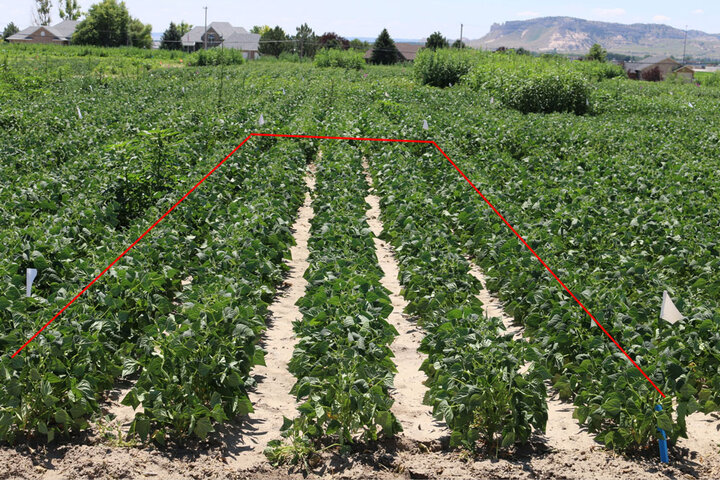Acetolactate synthase (ALS)-inhibitor resistant Palmer amaranth is difficult to control in dry beans. Currently labeled pre-emergence (PRE) and preplant incorporated (PPI) herbicides are effective for controlling ALS-inhibitor resistant Palmer amaranth. However, a post-emergence (POST) herbicide is generally needed to provide season-long control. ALS-inhibitor-resistant Palmer amaranth is resistant to Pursuit® and Raptor®, while Basagran® is generally ineffective for controlling pigweed species. Varisto®, a pre-packaged mixture of Raptor® and Basagran® is also ineffective. Reflex® is an effective herbicide for Palmer amaranth control but due to label restrictions, many dry bean farmers are unable to apply Reflex® within their rotation.
If dry bean growers are managing Palmer amaranth and are unable to apply Reflex®, a POST applied group 15 herbicide (such as Outlook) may be the best alternative. Group 15 herbicides will not control already emerged weeds but will control Palmer amaranth as it germinates. Group 15 herbicides applied sequentially can provide overlapping residual activity and supplement weed control achieved by POST herbicides. Currently, Outlook® is the only labeled group 15 herbicide for POST application in dry bean.
Timing of Outlook Applied POST in Dry Bean
Field experiments conducted at the Panhandle Research and Extension Center in Scottsbluff in 2019 and 2020 demonstrated that sequential applications of Outlook® can provide similar control of Palmer amaranth as Reflex® applied POST. In these studies, all herbicide programs contained a PRE application of Prowl® H20 (32 fl oz/A) + Outlook® (13 fl oz/A). While POST herbicides differed among herbicide programs and application timing (Table 1).
| POST herbicide (rate/Acre) | Palmer amaranth control (%) |
|---|---|
| 2019 | |
| Raptor® (4 fl oz) + Basagran® (1.2 pt) + Reflex® (16 fl oz) at V1 | 98 |
| Raptor® (4 fl oz) + Basagran® (1.2 pt) + Reflex® (16 fl oz) + Outlook® (8 fl oz) at V1 | 99 |
| Outlook® (8 fl oz) at V1 | 95 |
| Raptor® (4 fl oz) + Basagran® (1.2 pt) + Reflex® (16 fl oz) at V3 | 99 |
| Raptor® (4 fl oz) + Basagran® (1.2 pt) + Reflex® (16 fl oz) + Outlook® (8 fl oz) at V3 | 97 |
| Outlook® (8 fl oz) at V3 | 64 |
| 2020 | |
| Raptor® (4 fl oz) + Basagran® (1.2 pt) + Reflex® (16 fl oz) at V1 | 100 |
| Raptor® (4 fl oz) + Basagran® (1.2 pt) + Outlook® (8 fl oz) at V1 | 98 |
| Outlook® (8 fl oz) at V1 | 98 |
| Raptor® (4 fl oz/ + Basagran® (1.2 pt) + Reflex® (16 fl oz) at V3 | 99 |
| Raptor® (4 fl oz) + Basagran® (1.2 pt) + Outlook® (8 fl oz) at V3 | 99 |
| Outlook® (8 fl oz) at V3 | 98 |
Outlook applied at the first trifoliate (V1) provided season long control of Palmer amaranth in both 2019 and 2020. When Outlook was applied at the third trifoliate (V3), season-long weed control was achieved in 2020, but not in 2019.
2019



2020



Palmer amaranth emergence occurs throughout the season, generally from early May to late August. Consequently, weed control programs targeting Palmer amaranth need to provide season-long weed control, or weed control from planting through canopy closure. Weather conditions in 2019 likely led to a faster breakdown of residual activity from applied PRE herbicides compared to 2020, resulting in Palmer amaranth emerging after the V1 growth stage. Consequently, Palmer amaranth plants were not controlled when Outlook was applied alone at V3 in 2019. While in 2020, the sequential application of Outlook at V1 or V3 prevented Palmer amaranth emergence through the R1 stage, when the crop canopy was large enough to close rows and suppress weed emergence.
Take Home Message
- PRE herbicide longevity can be variable from year to year, along with the timing of Palmer amaranth emergence, depending on weather and other factors.
- Outlook applied at V1 in 2019 and 2020 provided excellent Palmer amaranth control, while Outlook applied at V3 was unable to suppress Palmer amaranth in 2019.
- Application timing is critical for sequential applications of Outlook, however, the longevity of soil applied herbicides and the timing of Palmer amaranth emergence is highly variable and difficult to predict.
